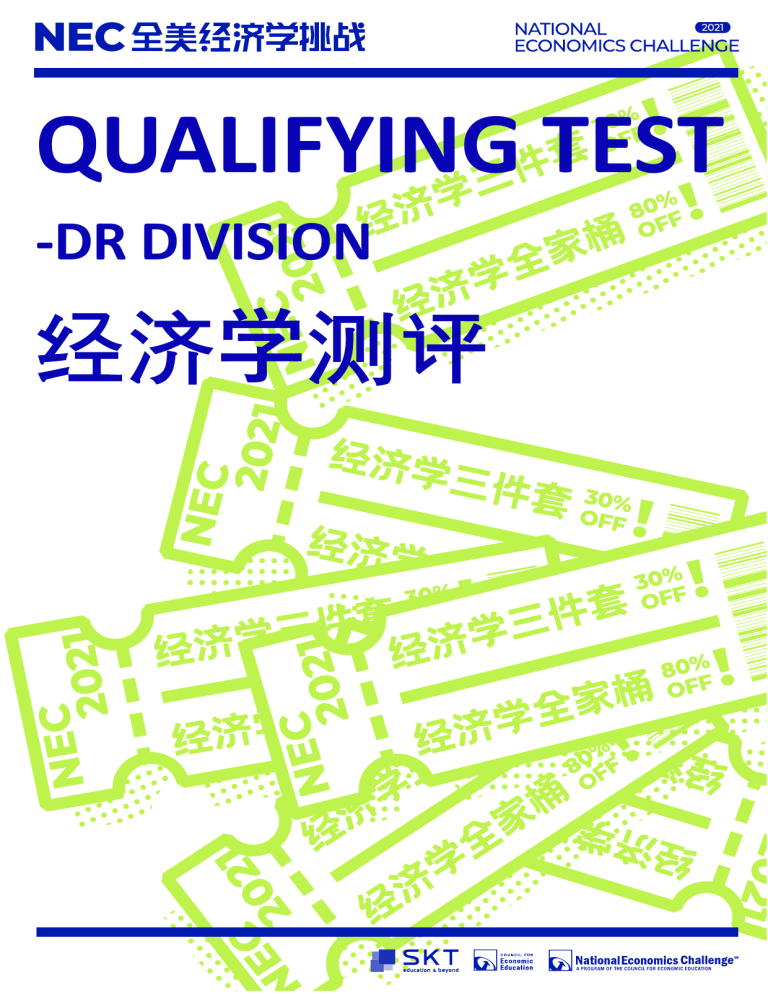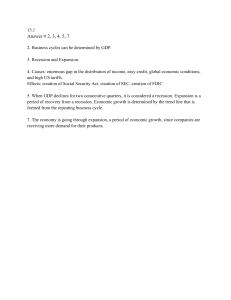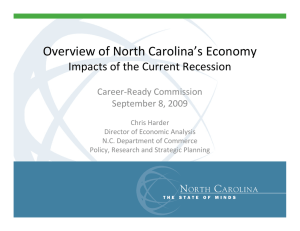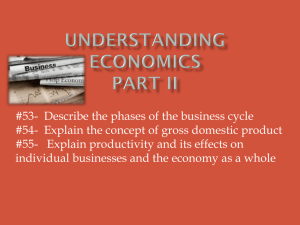
QUALIFYING TEST -DR DIVISION 经济学测评 1 1-Microeconomics 1) Sophie is eating tacos that cost $2 each. She will stop eating tacos when the marginal: A. cost of an additional taco is less than $2. B. benefit of an additional taco is less than $2. C. benefit of an additional taco is zero. D. cost of an additional taco is zero. E. cost of an additional taco is less than the marginal benefit. 2) A business will maximize profit if it produces the quantity of output at which A. total revenue = total cost B. average revenue = average variable cost C. marginal revenue = marginal cost D. total revenue = price E. average cost = total fixed cost 3) Which would most likely increase the quantity of gasoline sold in a competitive market? A. An increase in the price of crude oil. B. A decrease in the price of automobiles. C. A decrease in the income of consumers. D. An increase in taxes on gasoline products. E. An increase in interest rates. 4) Assume legislation cancels the regulations that give this industry monopoly power. What happens to price and production? A. Price increases and output shrinks. B. Price and output increase. C. Price and output remain constant. D. Price and output decrease. E. Price decreases and output expands. 5) Which of the following is a characteristic of oligopoly or monopolistic competition, but not perfect competition? A. Advertising and sales promotion. B. Profit maximization according to the MR = MC rule. C. Firms being price takers rather than price makers. D. Horizontal demand and marginal revenue curves. E. All above items are correct answers. 2 6) What are the fixed costs in the cost schedule shown here? A. 5 B. 20 C. 50 D. 100 E. fixed costs range from $5.00 to $105.00 7) Deadweight loss is the A. reduction in total surplus that results from a tax. B. loss of profit to businesses when a tax is imposed. C. reduction in consumer surplus when a tax is placed on buyers. D. decline in government revenue when taxes are reduced in a market. E. reduction in total incomes that results from an increase in interest rates. 8) Which would most likely increase the productivity of labor? A. An increase in capital investment B. A decrease in the pay of corporate executives C. An increase in interest rates for business loans. D. A decrease in the use of laborsaving technology. E. An increase in interest rates of individual savings. 9) Which of the following is clearly an example of price discrimination? A. charging different prices for next-day delivery and 3-day delivery. B. charging a lower price per unit for printing 500 business cards as opposed to printing 50. C. different prices for movie tickets for children and adults. D. higher prices for premium-grade gasoline compared to regular. E. higher prices for first-class seats on an airplane compared to coach. 10) The marginal cost of production is defined as A. the cost of producing the current level of output. 3 B. the benefit to society from producing total output. C. the cost of producing the current level of output divided by the number of units produced. D. the impact on the environment of producing one more unit. E. the change in total cost when an additional unit is produced. 11) Public goods tend to be: A. nonrival in consumption and excludable. B. nonrival in consumption and non-excludable. C. rival in consumption and publicly funded. D. rival in consumption and non-excludable. E. rival in consumption and excludable. 12) Natural monopolies tend to develop when: A. constant returns to scale exist. B. economies of scale exist. C. diseconomies of scale exist. D. high tariffs are imposed. E. patents are enforced. 2-Macroeconomics 13) A reduction in the money supply is likely to A. reduce the interest rate B. increase the interest rate C. increase inflation D. increase tax E. increase incomes of individuals 14) The market where existing securities are bought and sold is called the A. money market. B. capital market. C. secondary market. D. primary market. E. pre-existing market. 15) Which of the following is not included in GDP for the US? A. The value of a Honda made in the US. 4 B. The value of a Honda made in Japan. C. The value of the insurance policy covering a Honda. D. The value of the parts used to repair a Honda. E. The value of the commission on the sale of a Honda. 16) If we designate the bottom of the business cycle as phase one, the four phases of the business cycle, in order, are: A. recovery, peak, recession, recession. B. recovery, recession, peak, recession. C. peak, upturn, recession, recession. D. trough, recession, peak, recovery. E. trough, recovery, peak, recession. 17) The amount of _______increases when the economy goes into a recession and decreases when the economy goes into an expansion. A. structural unemployment B. seasonal unemployment C. cyclical unemployment D. frictional unemployment E. natural unemployment 18) If government spending increases by $1 million, GDP will increase by: A. $0.5 million B. $0.75 million C. between $0.5 and $1 million D. $1 million E. more than $1 million 3-International Economics and Current Events 19) When people in different countries trade freely with one another, A. people in one country benefit and people in the other country are hurt, on average. B. each person in both countries benefits from the trade. C. each person in both countries is hurt from the trade. D. the losses from trading outweigh the benefits worldwide, on average. E. people in both countries gain, on average. 5 20) Susan is planning a trip to Mexico for next month and will be buying some pesos. Before she does that, she prefers that: A. there be no change in the exchange rate. B. the dollar appreciates relative to the peso. C. the dollar depreciates relative to the peso. D. the Federal Reserve increases the money supply. E. the Mexican Government devalues the dollar. 21) If a country has a comparative advantage in producing coffee, this means that A. it can produce more coffee than its trading partners. B. it is advantageous to produce less coffee compared to its trading partners. C. it can produce coffee at a lower opportunity cost than its trading partners. D. when compared to the advantages of producing other goods, demand for coffee is higher. E. the country should not produce coffee for export, but only for domestic consumption. 22) A nation has an international trade deficit when A. its imports are greater than its exports B. its exports are greater than its imports C. its government expenditures are greater than its tax revenues. D. its tax revenues are greater than its government expenditures. E. its gold reserves are greater than the gold reserves of its trading partners. 23) Which statement about tariffs is true? A. Tariffs increase the market for exports. B. Tariffs decrease employment in protected industries. C. Tariffs benefit some groups at the expense of others D. Tariffs encourage the growth of a nation's most efficient industries. E. Tariffs decrease government revenues. 24) Which company was shorted by the muddy water fund in 2020 and reported financial fraud. A. iQiyi B. TAL Education Group C. Luckin Coffee D. New Oriental Education & Technology Group E. Baidu 6 6-Answers Microeconomics 1) 2) 3) 4) B C B E 5) A 6) A 7) A 8) A 9) C 10) E 11) B 12) B Macroeconomics 13) B 14) C 15) B 16) E 17) C 18) E International Economics and Current Events 19) E 20) B 21) C 22) A 23) C 24) C 7







